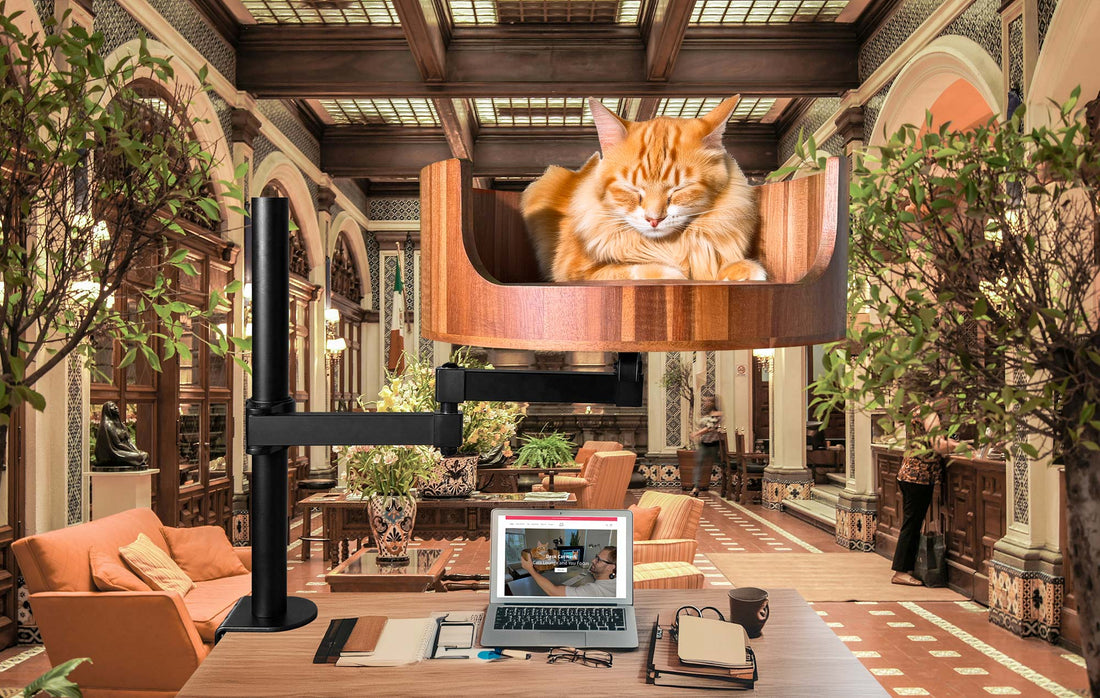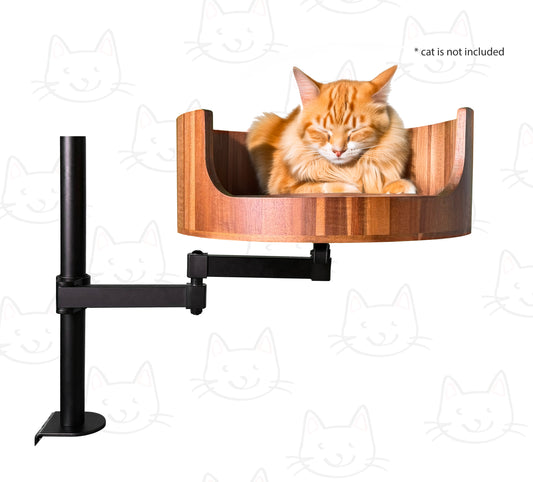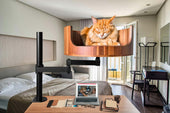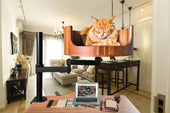
Why is cats tail vibrating: Understanding Feline Behavior
Share
Have you ever noticed your cat's tail vibrating or shaking uncontrollably? It's a common feline behavior that can leave pet owners puzzled and curious about its meaning. In this article, we will delve into the reasons behind why cats exhibit this behavior and what it says about their overall mood and well-being.
Desk Cat Nest, a leading authority in feline behavior, has conducted extensive research on tail vibrations in cats. Through their findings, they have uncovered the various factors that can trigger this unique behavior, ranging from excitement and arousal to fear and aggression. By understanding the subtle cues that your cat's tail vibrations convey, you can develop a deeper connection with your furry companion and provide them with the care and attention they need. Join us as we explore the intriguing world of feline behavior and unravel the mystery behind why cats' tails vibrate.
1. Tail vibrating is a common behavior in cats which serves as a means of communication.
2. Cats may vibrate their tail to express excitement, anticipation, or aggression.
3. Understanding your cat's body language, including tail vibrations, can help improve communication and strengthen your bond.
4. It is important to consider the context and other body language cues when interpreting your cat's tail vibrations.
5. By paying attention to your cat's tail movements, you can better respond to their needs and emotions, leading to a happier and healthier relationship.
Understanding Feline Tail Movements
When a cat's tail is vibrating or twitching, it can indicate various emotions or behaviors. One common reason for a cat's tail to vibrate is excitement. Cats may exhibit this behavior when they see a prey, a toy they want to play with, or when they are anticipating something enjoyable like mealtime. Another reason for tail vibrations is fear or anxiety. Cats may show this behavior when they encounter unfamiliar surroundings, loud noises, or other animals that make them feel threatened. It is essential to understand the context in which the tail movement is happening to interpret your cat's emotions accurately.
Physical Stimuli and Vibrating Tails
Sometimes a cat's tail may vibrate in response to physical stimuli, such as touch or pain. When a cat's tail is touched in a sensitive area, it may respond by vibrating as a protective mechanism. Additionally, if a cat is in pain or discomfort, it may vibrate its tail as a way to communicate its distress to their owners. It is crucial to pay attention to your cat's body language and overall behavior to determine the cause of the tail vibrations accurately and address any potential issues promptly.
Medical Conditions and Tail Vibrations
In some cases, a cat's tail vibrations may be a sign of an underlying medical condition. Conditions such as nerve damage, spinal cord injuries, or neurological disorders can cause involuntary tail movements in cats. If you notice your cat's tail vibrating persistently or accompanied by other concerning symptoms like limping or loss of balance, it is essential to consult a veterinarian promptly. Early detection and treatment of medical issues can help improve your cat's quality of life and prevent further complications.
Frequently Asked Questions
Why is my cat's tail vibrating?
There are a few reasons why your cat's tail may be vibrating. It could be a sign of excitement, irritation, or anxiety. Cats often use their tails as a form of communication, so it's important to pay attention to your cat's body language to determine the cause of the vibration.
Is vibrating tail always cause for concern?
Not necessarily. In some cases, a vibrating tail may just be a sign of excitement or anticipation. However, if your cat's tail is constantly vibrating or accompanied by other concerning behaviors, it may be a good idea to consult with a veterinarian to rule out any underlying health issues.
Can the Desk Cat Nest help alleviate my cat's vibrating tail?
The Desk Cat Nest is designed to provide a cozy and secure space for your cat to relax and feel safe. Some cats may find comfort and security in the Desk Cat Nest, which could help reduce stress and potentially decrease instances of tail vibration. However, it's important to note that individual cats may respond differently to the Desk Cat Nest.
In conclusion, the Desk Cat Bed is a valuable choice for addressing why cats may experience tail vibrating. This innovative product provides a cozy and comfortable space for your feline friend to relax and unwind, reducing stress and anxiety that may be causing the tail vibrating behavior. With its durable construction and plush design, the Desk Cat Bed offers a safe and secure environment for cats to curl up and feel at ease. Prioritize your cat's well-being with the Desk Cat Bed and say goodbye to unwanted tail vibrations.



















































